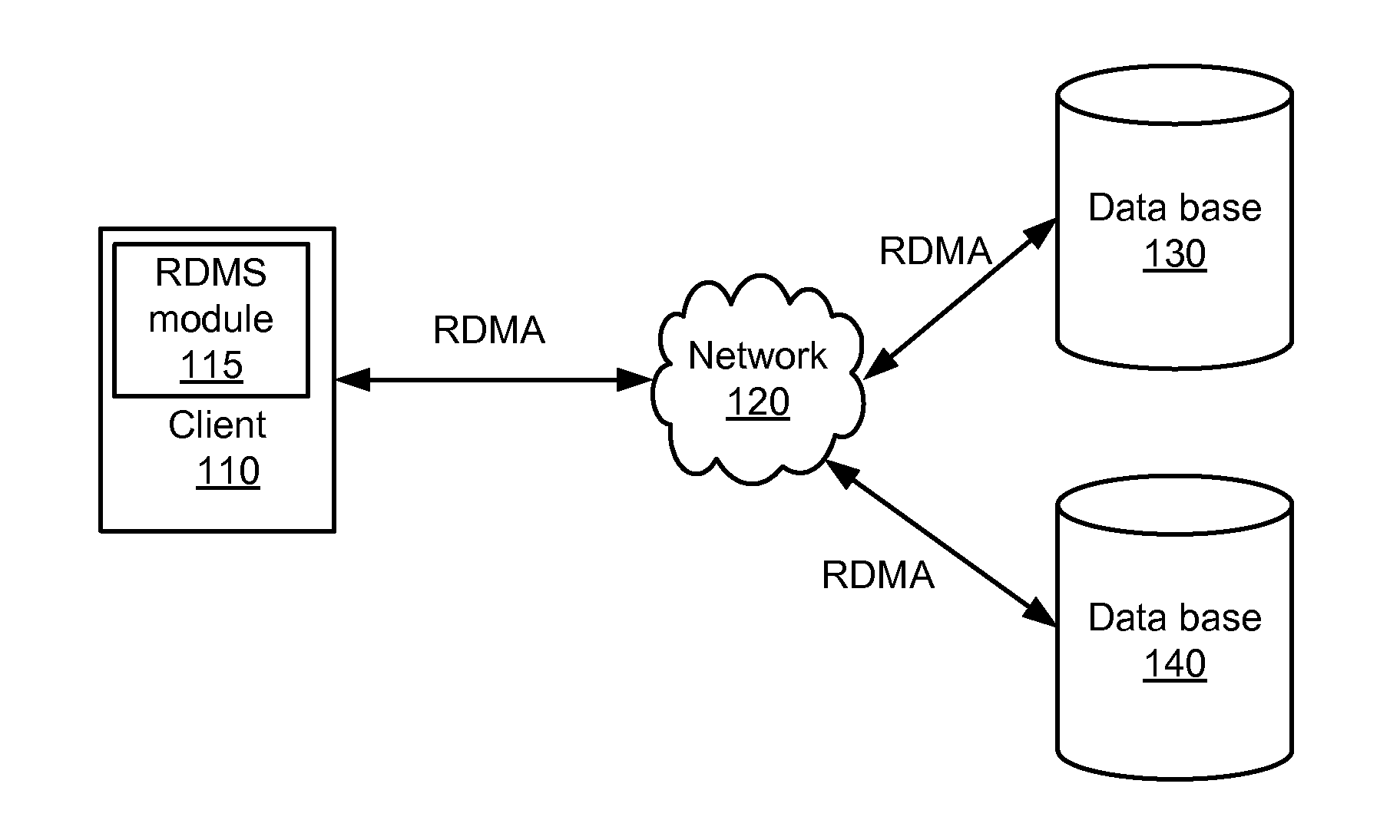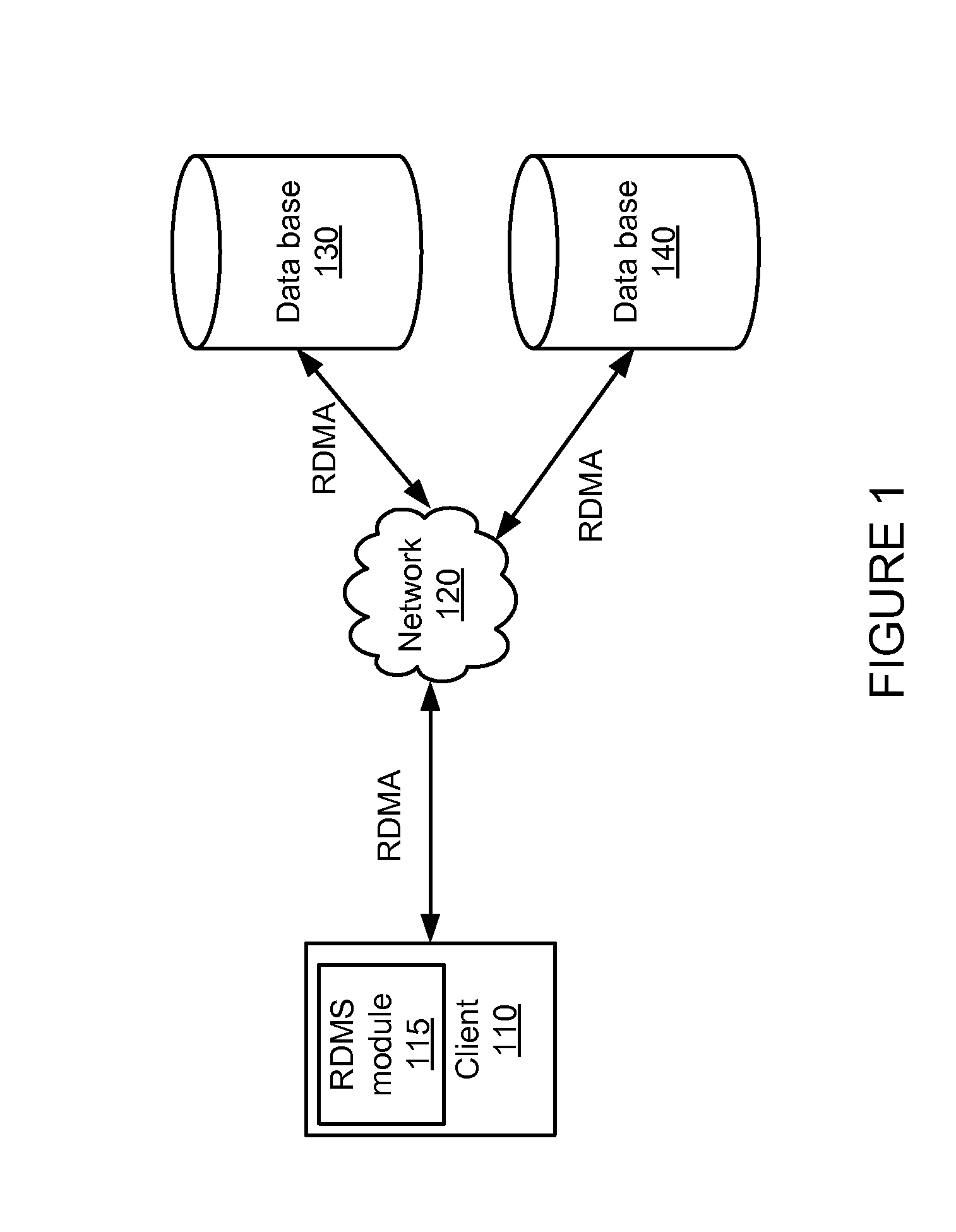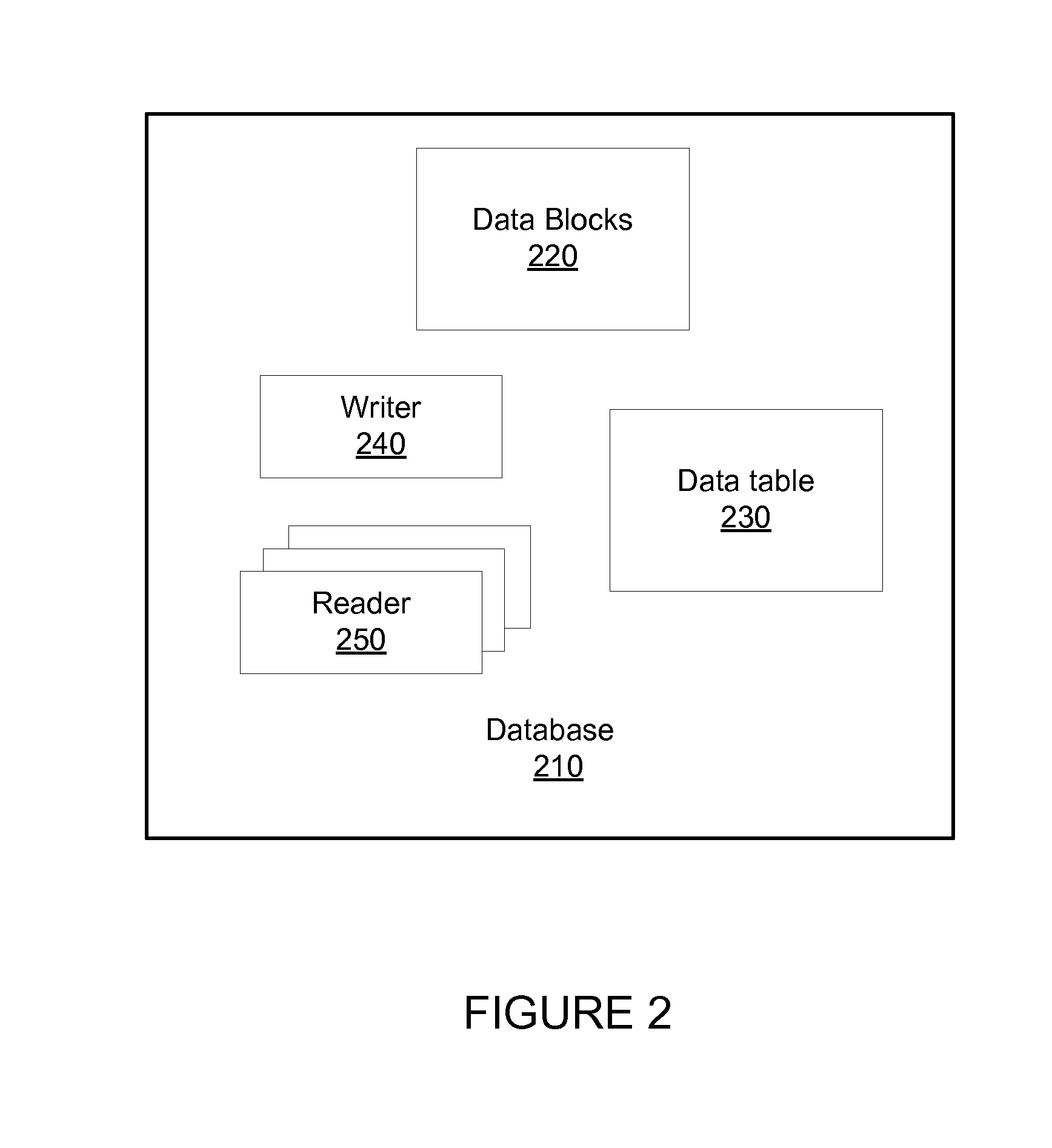Replicated database using one sided rdma
- Summary
- Abstract
- Description
- Claims
- Application Information
AI Technical Summary
Benefits of technology
Problems solved by technology
Method used
Image
Examples
Embodiment Construction
[0016]The present technology may provide database replication with low latency using one-sided remote direct memory access. A client may communicate with a DMBS spread across more than one server. The database may include one or more collections of data, known as tables. Each table may be composed of one or more memory data blocks of storage. Memory blocks are either in use storing data, or free for later use. In some DBMSs an in-use block is known as a database row.
[0017]Each in-use block may be uniquely identified by a descriptor known as a key. Each table may have an index which may be used to find specific data blocks quickly based on their keys. The index structure may also indicate what data blocks are used and unused. To read the data from a table associated with a certain key, the index structure is accessed to find the specific block containing the data referenced by the key.
[0018]After the location is determined, the data is retrieved by reading from the block. After the d...
PUM
 Login to View More
Login to View More Abstract
Description
Claims
Application Information
 Login to View More
Login to View More - R&D
- Intellectual Property
- Life Sciences
- Materials
- Tech Scout
- Unparalleled Data Quality
- Higher Quality Content
- 60% Fewer Hallucinations
Browse by: Latest US Patents, China's latest patents, Technical Efficacy Thesaurus, Application Domain, Technology Topic, Popular Technical Reports.
© 2025 PatSnap. All rights reserved.Legal|Privacy policy|Modern Slavery Act Transparency Statement|Sitemap|About US| Contact US: help@patsnap.com



